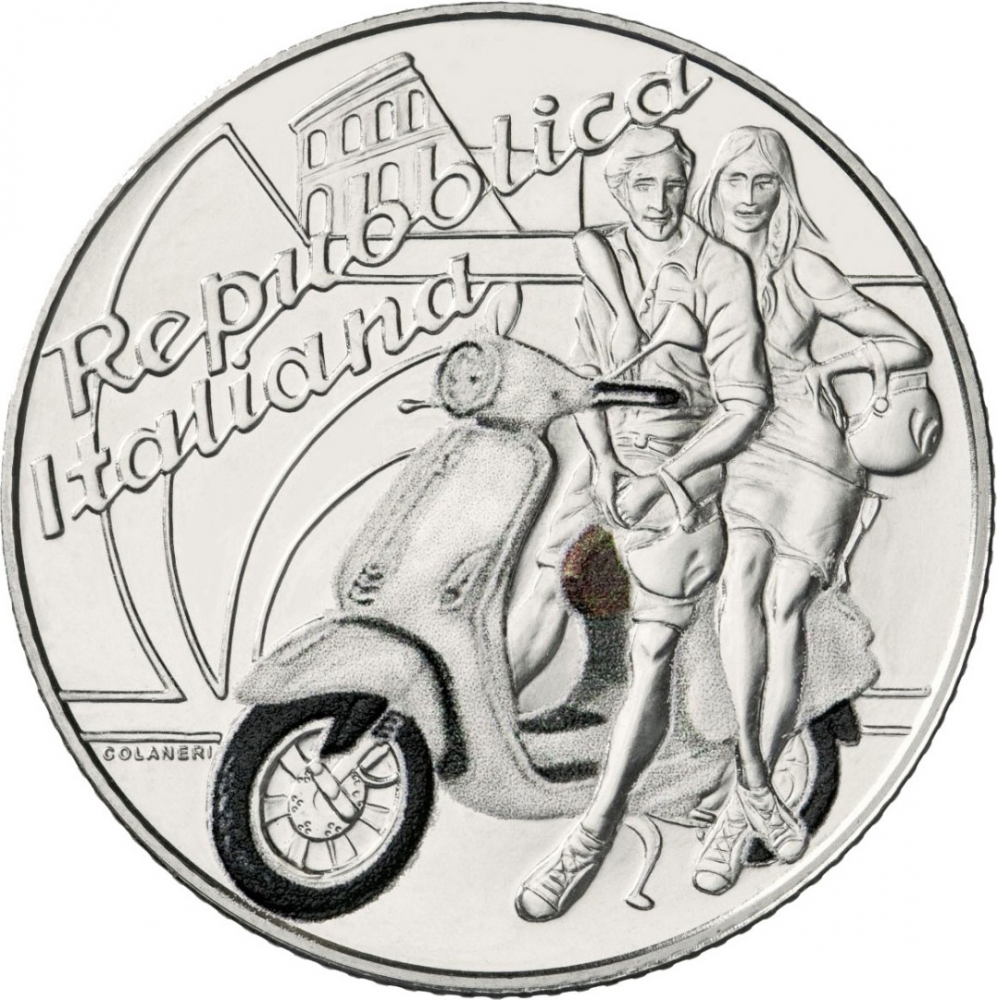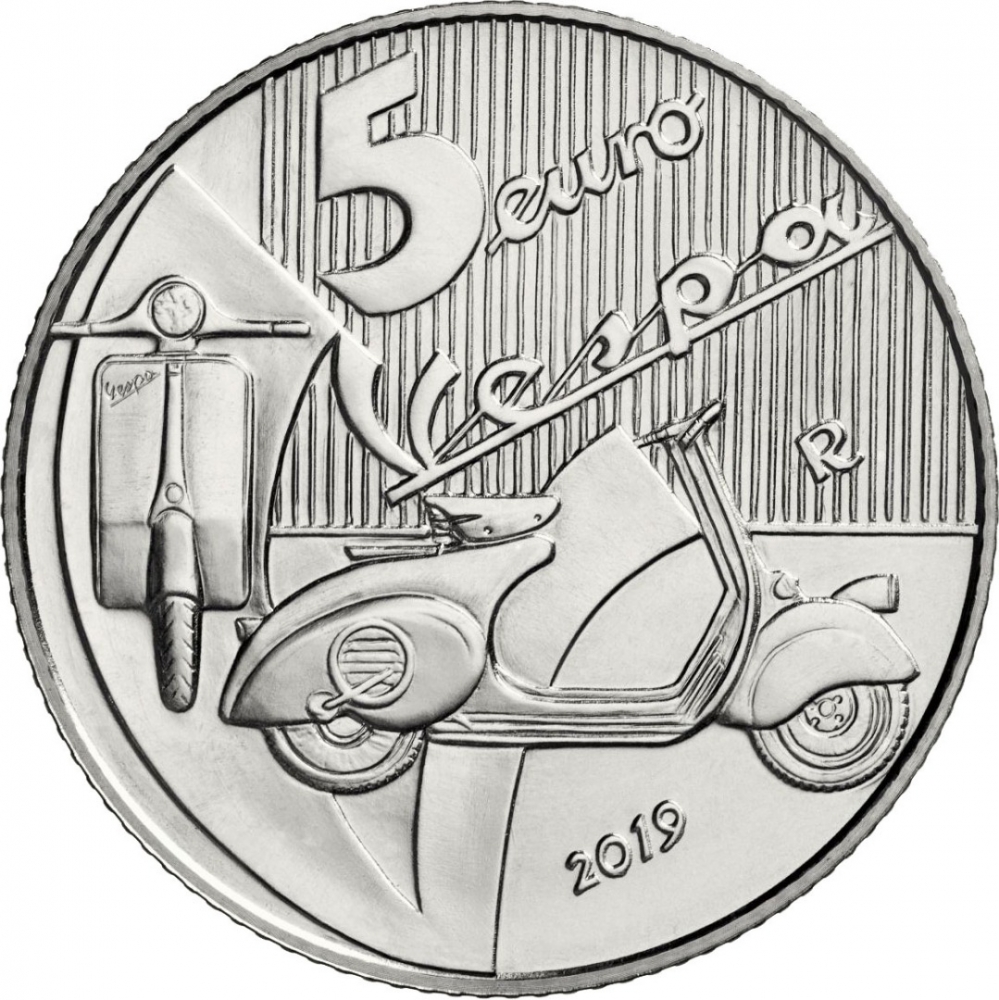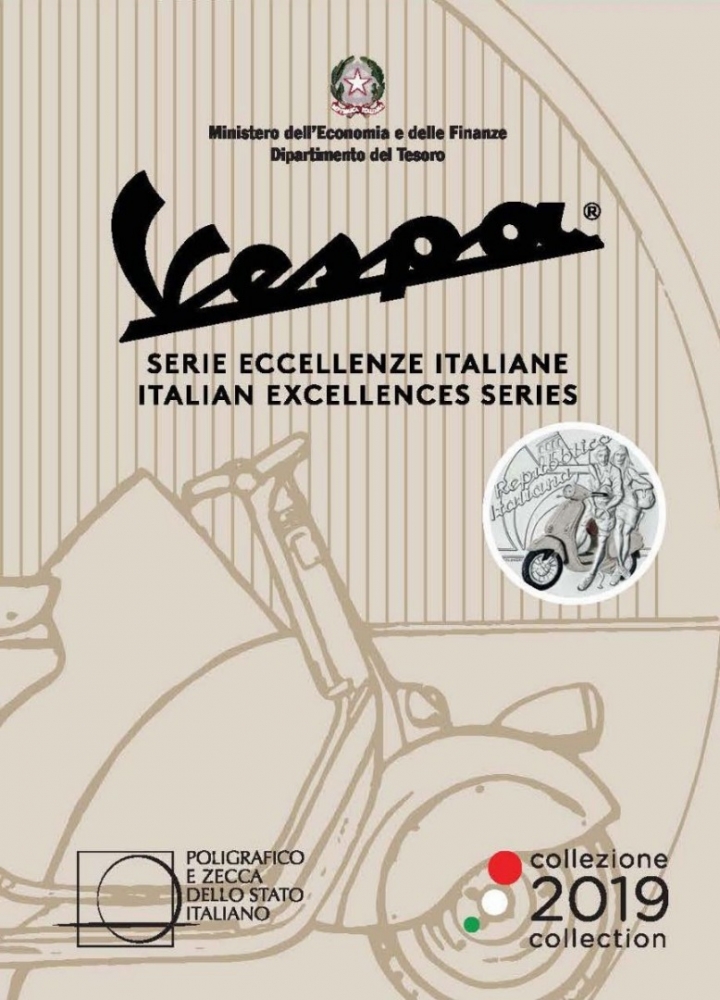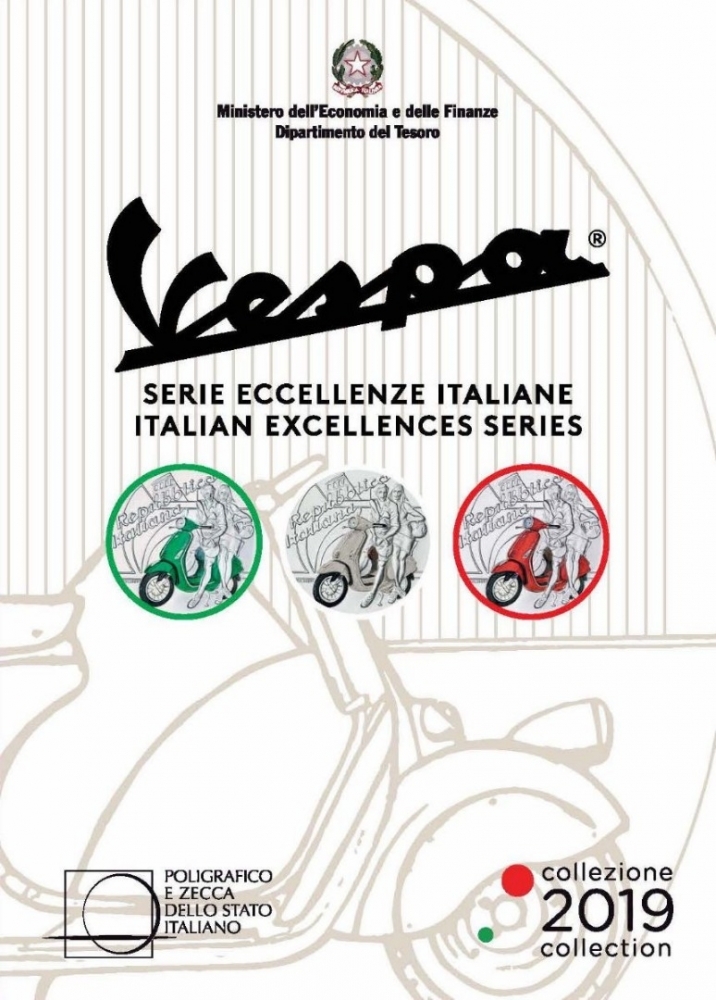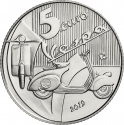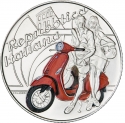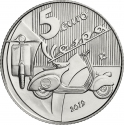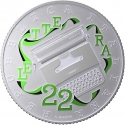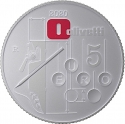You are about to finish your registration. Please check your mailbox (including spam folder). There should be a letter with a confirmation link. Check setting to make sure that your e-mail address is correct.
Send letter againDescription
The "Italian Excellence" series is dedicated to traditional Italian companies. The three silver coins included in the set have been partially colored so that together they depict the national colors of Italy.
The 2019 issue focused on one product to have emerged from the economic boom after the end of the Second World War, the Vespa.
In 1944 Piaggio engineers Renzo Spolti and Vittorio Casini put their idea to paper and designed a motorcycle with bodywork that fully enclosed the drivetrain and formed a tall splash guard at the front. In addition to the bodywork, the design included handlebar-mounted controls, forced air cooling, wheels of small diameter, and a tall central section that had to be straddled. Incredibly forward-thinking at the time, the design was immediately well-received, and, as a consequence, much of the original design was re-worked by aeronautical engineer Corradino D’Ascanio on the instructions of the management of Enrico Piaggio. Upon seeing the re-worked prototype model for the first time, Enrico Piaggio exclaimed: “Sembra una vespa!” (“It looks like a wasp!”) And it was this moment when Piaggio effectively named his new scooter on the spot. The word Vespa is both Latin and Italian for wasp, and it also accurately described the vehicle’s body shape — with a thicker rear part connected to the front part by a narrow waist, and the steering rod resembling antennae.
Following its official launch and public debut at the 1946 Milan Fair, the first 50 sold slowly, but with the introduction of payment by installments, sales took off with sales of 2,500 Vespas in 1947, over 10,000 in 1948, 20,000 in 1949, and over 60,000 in 1950. Hollywood also did their part on promotion, in terms of creating an iconic image of Italy and Rome post-war. In 1952, Audrey Hepburn side-saddled Gregory Peck’s Vespa in the feature film Roman Holiday for a ride through Rome. Their trek through the city resulted in over 100,000 sales. Since their introduction, more than 16 million Vespa’s have been sold and are currently manufactured in 13 countries.
Engraver: Maria Carmela Colaneri
Obverse

|
Depicts a boy and a girl on a modern model of the Vespa in white colour, and in the background, the Coliseum of Rome. The composition is dominated by the inscription REPUBBLICA ITALIANA, and below, the name of the designer COLANERI. REPUBBLICA ITALIANA |
|---|---|
Reverse

|
Depicts a graphic composition of profile and front views of the Vespa with Piaggio trademark elements and stylised features. Above, is the value 5 EURO, along with the name VESPA in the characteristic italics of the logo of the most famous scooter in the world. On the right is the letter “R,” identifying the Mint of Rome, and below, on the right, is the year of the coin’s issue 2019. 5 EURO |
| Edge |
5 Euro
Italian Excellences
75th Anniversary of the Vespa - White
Subscribe series
KM#
Italian Excellences
75th Anniversary of the Vespa - White
